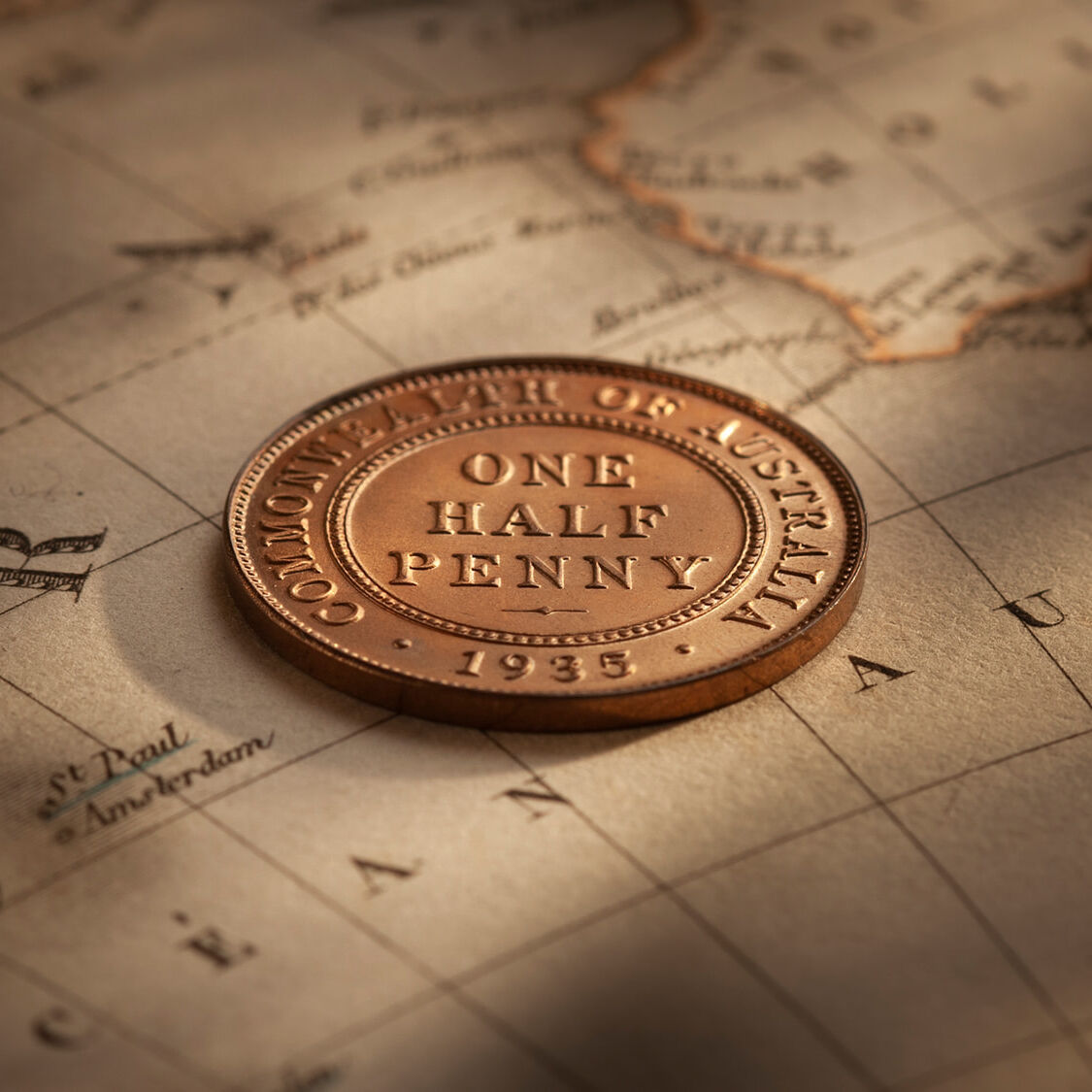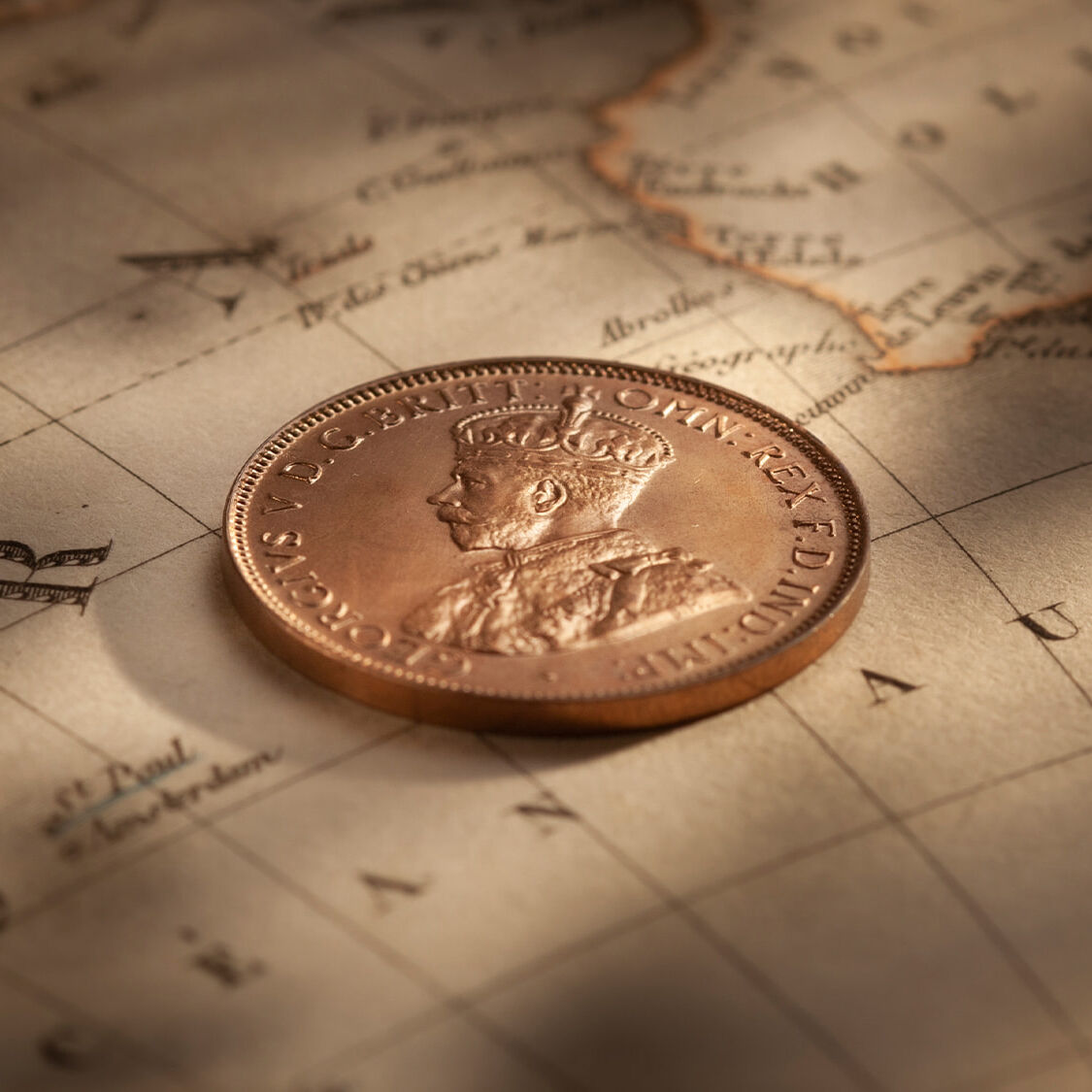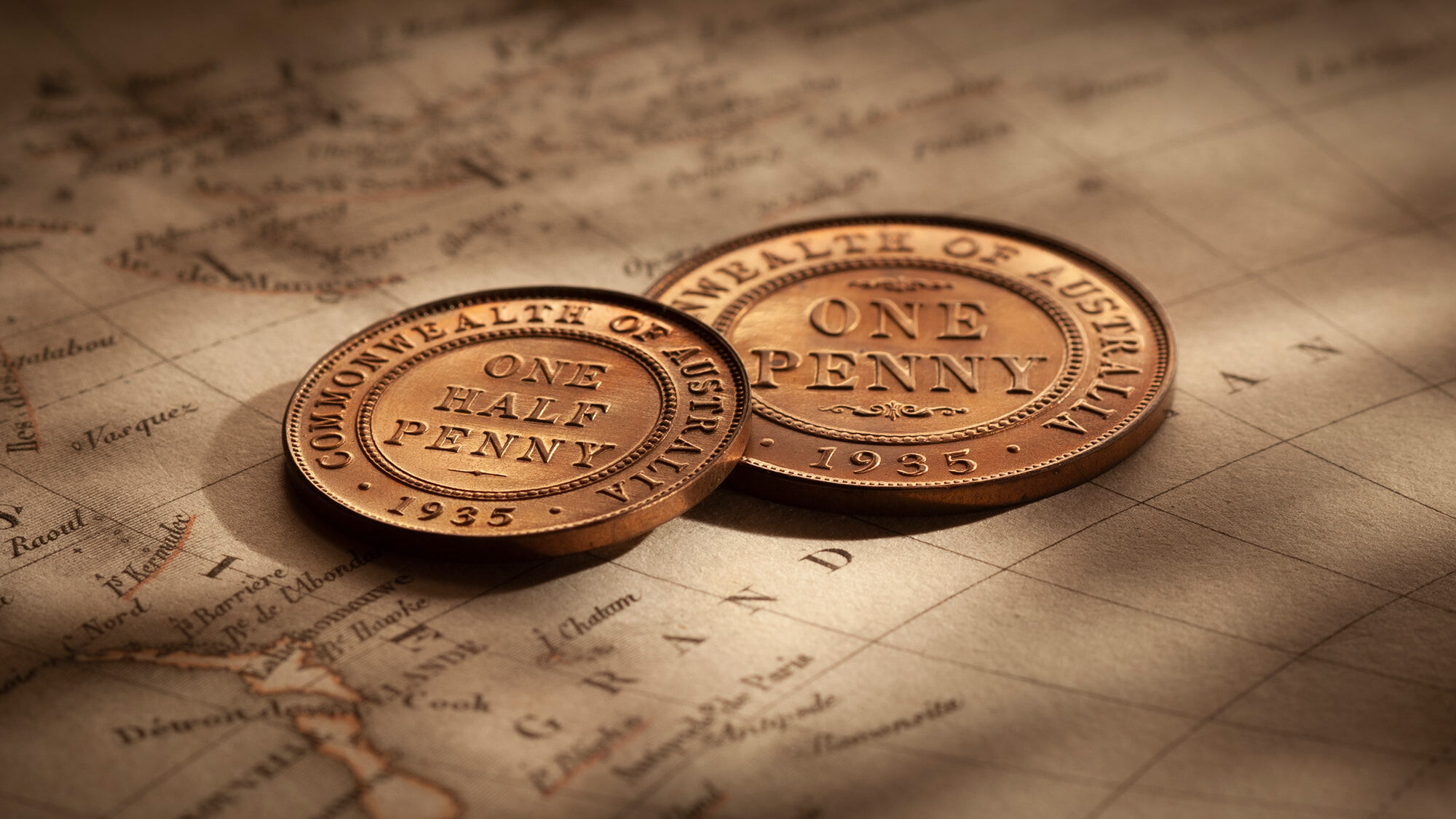Proof 1935 Halfpenny struck at the Melbourne Mint


The pride and satisfaction associated with owning a special coin is markedly enhanced with knowledge of both the people associated with its production and previous owners through whose hands it has passed.
New Zealand numismatist, Henry George Williams played a key role in persuading the Melbourne Mint to issue proof coins on a commercial basis in 1935.
Williams was captivated by the golden-eye appeal achieved by the Melbourne Mint with their proof coppers and ordered 126 pennies and 126 halfpennies.
Williams sold the majority of pairs into the advanced collector markets in the U.K. and the U.S, the very reason why the coins are so scarce in the Australian market.
That Williams did not request the minting of any proof silver coins in 1935 reflected his personal preference and his insight into the market, that demand for the bronze coins far outweighed that for the silver.
As the photos reveal, the strike detail and the finish of the coins is unsurpassed by any other proofs out of the George V era.
Historical letters confirm that the proofs of 1935 were struck from especially hardened blanks, and were struck twice with fresh dies in the presses. The lack of bag marks is consistent with the coins being made effectively by hand.

Brilliant Proof 1935 Penny and equally brilliant and matching, Proof 1935 Halfpenny. The Penny has sold. The Halfpenny is available now.
Natural attrition has taken its toll on the original mintage with many of the pairs broken up and individual coins sold-off.
We would expect to sight a Proof 1935 Halfpenny (or 1935 Penny) on the open market, perhaps once every year.
One of the calibre of this Proof 1935 Halfpenny can be a once-in-a-lifetime opportunity for a keen collector.
With on-line ordering and toll-free phone numbers, buying your favourite collector coin from the Royal Australian Mint has never been easier. Collectors in the nineteenth and twentieth century however were not afforded the same consideration from the operating mints.
The Sydney Mint opened in 1855 as a branch of the Royal Mint London and closed in 1926. Throughout its entire history, the mint did not strike proofs for collectors on a commercial basis. The Melbourne Mint, Australia’s second coining facility, opened in 1872. During its first forty-four years of operation, the mint did not strike coins for collectors on a commercial basis.
The Melbourne Mint’s first commercial foray for collectors occurred in 1916 when the mint especially created a presentation set to commemorate its inaugural striking of the Commonwealth’s silver coins.
Sadly, for collectors, the 1916 Presentation Set did not set a precedent for further coin issues. Government policy dictated that minting resources be applied to the striking of circulating coins for Treasury, rather than pandering to the whims of collectors through the regular issuing of proofs.
Over the next thirty-eight years, from 1916 to 1953, the Melbourne Mint played ‘cat and mouse’ with collectors by releasing only another seven proof and/or specimen issues. The issues were ad hoc. The mintages inconsistent.
The years in which the collector issues occurred were 1916, 1927, 1934, 1935, 1937, 1938, 1939 and 1953.
We refer to these eight issues as ‘The Collector Coins of the Melbourne Mint, 1916 to 1953’.
They were pivotal in changing Australia's coin collecting landscape in the twentieth century, the pre-cursor to the series taken up by the Royal Australian Mint in 1966.
© Copyright: Coinworks
